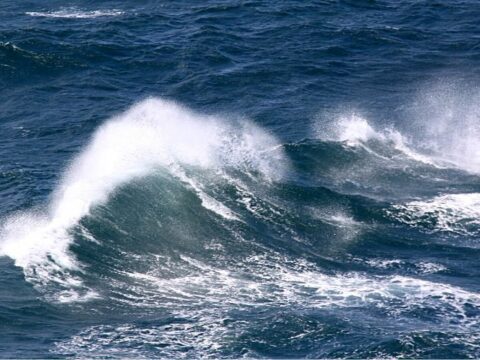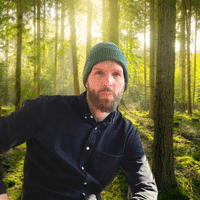The calm and soothing yet somewhat scary feeling of an ocean is unmatchable. The endless possibilities of the ocean are enough to send a shiver down my spine.
As I was thinking about the fascinating way the ocean and its waves work, I began to wonder about the whitecaps on the ocean.
What is that? And why are these whitecaps present?
It took a lot of research here and there to learn more about it, but I found it.
Table of Contents
Whitecaps on the Ocean
Whitecaps result from wave breaking caused by steepness in deeper water. They occur when the height of the waves is larger than the wavelength. The higher the wind speed, the more whitecaps are formed. They indicate a higher wind speed and may indicate worsening weather conditions.
Do you know what the whitecaps on the ocean are? Keep reading to learn more!
What Causes The Whitecaps
Whitecaps result from wave breaking caused by steepness in deeper water. They occur when the height of the wave exceeds the wavelength.
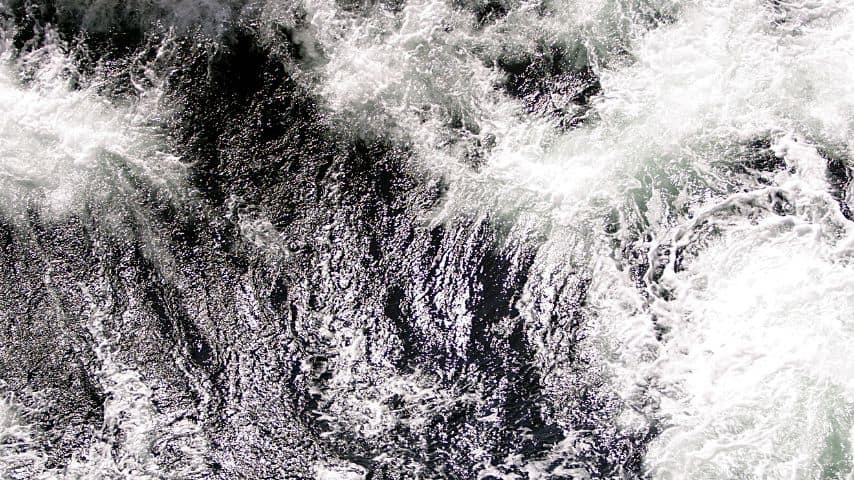
When significant volumes of bubbles created by a wave reach the surface, whitecaps develop on the ocean.
Air and seawater mingle as the waves break, forming these tops.
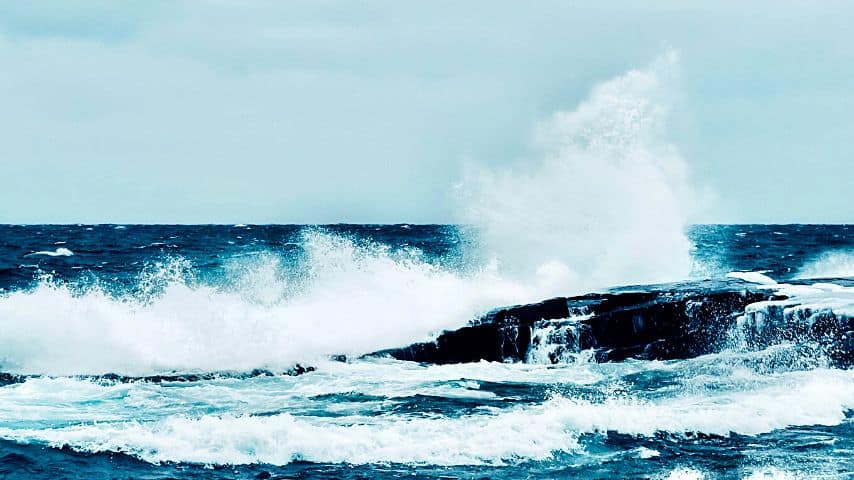
The white cap occurrence depends on the speed of the wind. On the Beaufort scale, they start occurring at 7 to 10 knots (12 to 19 kilometers per hour OR 8 to 12 miles per hour) and higher.
The Beaufort number for whitecaps is 3 and above. However, whitecaps do not occur anywhere below this speed.
While whitecaps are generated by wave breaking, it is not the only thing that contributes to their formation. Other processes contribute to it as well.
These include the distance the wind’s blowing over the water’s surface, the wind strength, and the wind field’s duration.
The percentage of whitecaps on the ocean is irregularly distributed and strongly depends on the wind speed.
What Makes Whitecaps White
Once I figured out what causes the whitecaps, I began to wonder why it is white?
Out of all the colors in the world, why are these white? After all, the ocean is blue, so why not blue caps?
I researched some more and found out.
Multiple light scattering by components of a size similar to or larger than the wavelength of visible light causes the white area of the white cap.
Again, in simpler terms, the water droplets at the wave’s edge separate from one another.
Once these water droplets catch the sun’s light, the light itself will break or scatter from the visible spectrum. And that is why they appear white.
Types of Waves
Wind Waves
Wind waves are the most common type of ocean waves.
Wind-generated waves are created when the energy passes through the water. Waves are then produced when the energy cause the water to move in a motion that’s circular.
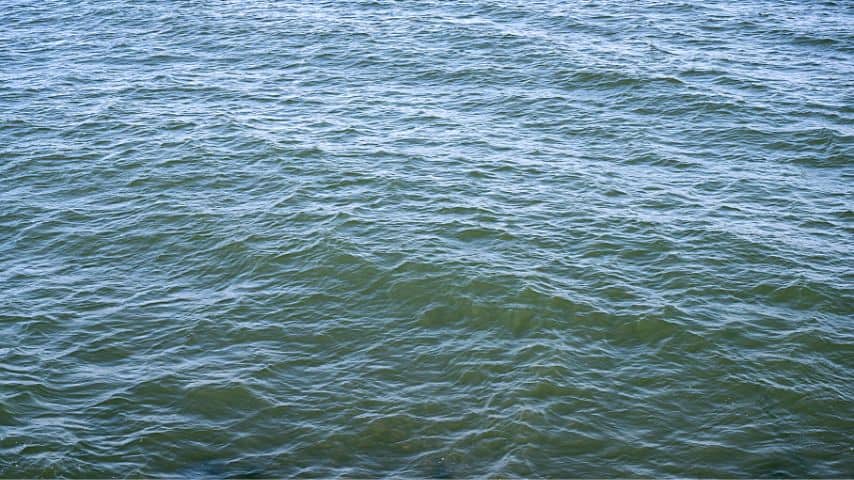
The constant disruption created by wind blowing across the ocean’s surface forms a wave crest.
In simpler words, waves are mostly formed because of the wind. The water would probably be still and flat if it weren’t for the wind.
The larger the waves produced as the winds grow stronger and are more prolonged.
Tidal Waves
Waves aren’t only caused by the wind. You must have heard that the moon causes the waves to form.
These are called tidal waves.
These waves occur because of the moon and earth’s gravitational pull.
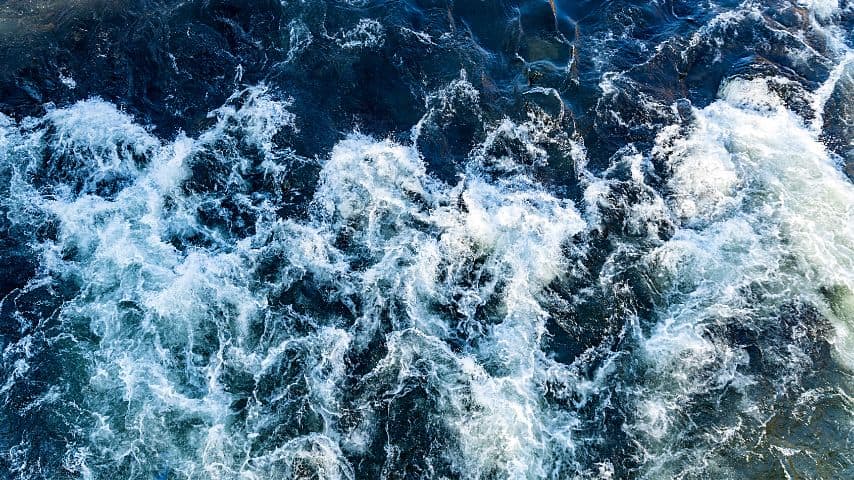
The moon’s gravity then pulls on the earth’s ocean water. And since the earth constantly moves, it cannot keep the water still.
So the tidal waves are formed.
Underwater Explosions
Tsunamis are underwater explosions that occur when there is an earthquake near or under the ocean’s surface.
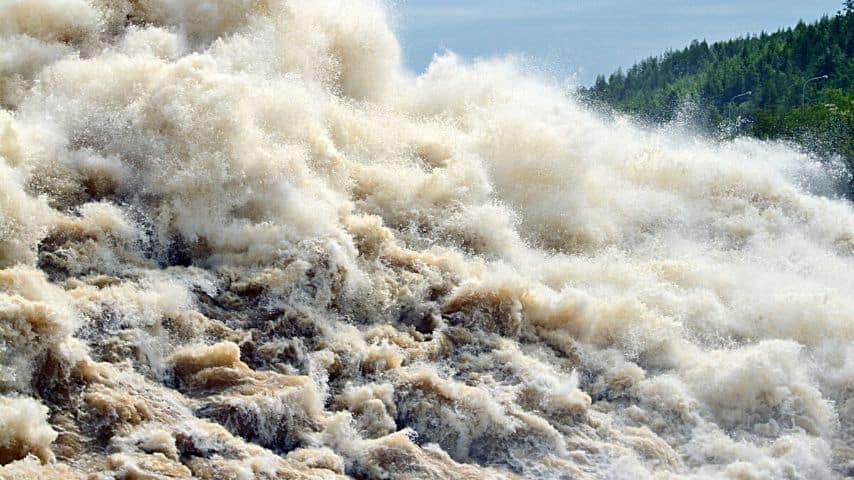
They are destructive waves that can be very harmful and dangerous to the land.
Should We Be Worried About Whitecaps?
It is less about the whitecaps themselves and more about what the whitecaps indicate.
If you plan to travel from the sea or even go on a boat for fun, it is better to postpone the plan.
Whitecaps signify that the wind is picking up, and the weather will likely worsen.
As I mentioned above, whitecaps start occurring at a Beaufort number of 3. If the wind speed is between 19 to 24 miles per hour, there will be some whitecaps.
But as the wind speed increases, the effect it has on the sea begins to get intense.
The whitecaps can be an indication of the wind speed increases and the weather conditions getting worse.
The more prevalent and prolonged the whitecaps are, the stronger the wind speed.
Any near-ocean activity you have planned during this time is not a wise decision.
Frequently Asked Questions about What Whitecaps on the Ocean are
What is a Beaufort Wind Scale?
The Beaufort Wind Scale is a table that represents wind force as a sequence of numbers ranging from 0 to 12. The numbers 0 to 12 are the most common, while there are five more, which are only relevant to tropical typhoons.
What is swell in the ocean?
Ocean swells are a series of ocean surface waves not generated by the wind. It is an increase in the height of the wave due to a distant storm.
